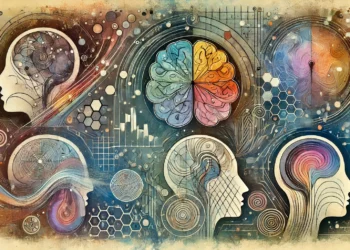Researchers at the University of Maryland scanned the brains of 12-year-olds while they performed a task, finding that the children became hypersensitive towards making errors when others were watching. The findings provide a potential neurological mechanism that might explain why people develop social anxiety.

George Buzzell, along with other psychologists at the University of Maryland, wanted to investigate the mechanisms that underlie social anxiety, which is considered the third largest mental health care problem in the world today. By one estimate, 15 million adults (men and women equally), or 6.8% of the U.S. population, are affected by social anxiety disorder (SAD). Social anxiety is the fear of interacting with other people; specifically, it is the fear of being negatively judged and evaluated by other people. SAD is considered chronic because it does not go away on its own
Although there are various therapies that can help people with SAD, scientists have had trouble understanding how the disorder plays out on a neurological level. Buzzell and colleagues performed a new study on 107 twelve-year-olds who had displayed behavioral inhibition when they were younger — a temperament identified in early childhood that is a risk factor for later social anxiety.
The children were asked to complete a test called the flanker task under two conditions: once while believing they were being observed by peers and once while not being observed. While completing the task, each participant had their electrical brain activity monitored with an electroencephalogram (EEG). The researchers also assessed current social anxiety symptoms and lifetime diagnoses of social anxiety for each teenager.
Based on the post-error response time and a measured pattern of brain activity known as Error-Related Negativity, the researchers found that social anxiety and behavioral inhibition were linked. Because the children are too focused on one’s perceived mistakes in social situations, social anxiety follows. Essentially, this may be evidence of a neurobehavioral mechanism linking behavioral inhibition to adolescent social anxiety symptoms and diagnosis.
“I am interested in better understanding social anxiety, and how it develops, for a number of reasons,” George Buzzell told PsyPost.
“First and foremost, social anxiety is a debilitating disorder affecting many individuals and we need to better understand this disorder if we want to help these people. I myself struggled with social anxiety for almost two decades and feel that I have been largely successful in overcoming it; I want to better understand this disorder so that I can help others find the help they need to do the same.”
There are a couple of caveats to the study. Firstly, the participants’ neurobehavioral measures were assessed only after signs of social anxiety had already settled in. Secondly, ‘error preoccupation’ was measured based only on reaction times, which is a crude measurement. In the future, the researchers plan on using more sophisticated methods to gain a better picture of the neurological processes that precede and follow errors.
Scientific reference: “A Neurobehavioral Mechanism Linking Behaviorally Inhibited Temperament and Later Adolescent Social Anxiety“, was authored by George A. Buzzell, Sonya V. Troller-Renfree, Tyson V. Barker, Lindsay C. Bowman, Andrea Chronis-Tuscano, Heather A. Henderson, Jerome Kagan, Daniel S. Pine, and Nathan A. Fox.






